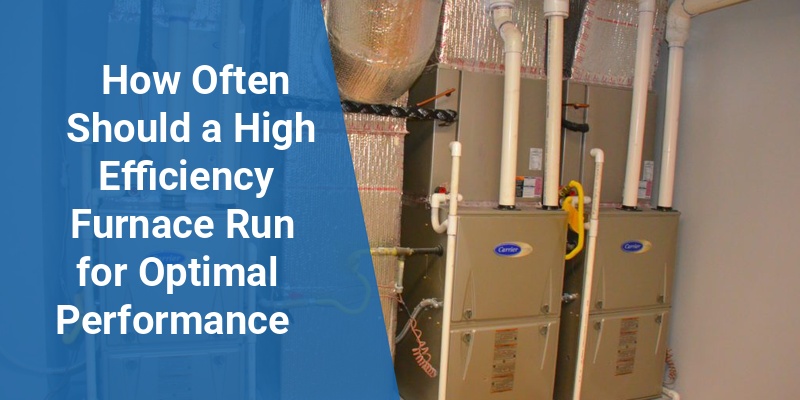Determining how often a high efficiency furnace should run is crucial for homeowners aiming to balance comfort, energy efficiency, and equipment longevity. Unlike traditional furnaces, high efficiency models operate differently due to advanced technology, impacting their run cycles. This article explores the ideal operating frequency, factors influencing furnace run time, and maintenance tips to ensure the system performs optimally.
| Run Frequency Aspect | Recommended Practice | Impact |
|---|---|---|
| Cycle Duration | Longer, steady cycles (15-30 minutes) | Improved efficiency and comfort |
| Daily Runtime | Varies based on home size and climate (Usually 4-8 hours total) | Maintains consistent indoor temperature |
| Fan Operation | Runs intermittently or continuously based on settings | Enhances air circulation and filtration |
| Seasonal Adjustment | More frequent in winter, less in shoulder seasons | Adapts to heating demand and energy savings |
Understanding High Efficiency Furnace Operation
A high efficiency furnace typically uses advanced heat exchangers and variable-speed blowers to extract more heat from fuel combustion. Its annual fuel utilization efficiency (AFUE) exceeds 90%, meaning it converts over 90% of fuel into usable heat. This technology leads to different running patterns compared to standard furnaces, with longer and slower cycles for more consistent heat delivery and less energy waste.
Factors Influencing How Often a High Efficiency Furnace Runs
Home Size and Insulation
Larger homes or those with poor insulation require longer furnace runtimes to maintain desired temperatures. Well-insulated homes retain heat better, resulting in shorter cycles and less frequent operation.
Thermostat Settings and Usage
Lower thermostat settings reduce the frequency and duration of furnace cycles, while raising the temperature increases runtime. Programmable thermostats can optimize furnace use by adjusting temperatures during different periods of the day.
Outdoor Temperature and Climate
Colder climates demand more frequent and longer furnace runs. Mild weather reduces heating requirements, resulting in less operational time.
Furnace Size and Capacity
An oversized furnace may cycle on and off too frequently, decreasing efficiency and comfort. A properly sized unit will run longer cycles, maximizing efficiency.
Ideal Run Cycles for High Efficiency Furnaces
The best operating cycle length for a high efficiency furnace is generally between 15 and 30 minutes per run. Short cycling (frequent on/off phases lasting under 10 minutes) wastes fuel and stresses furnace components, while longer cycles promote efficient combustion and consistent heat distribution.
Call 888-906-9139 for Free Local HVAC Quotes – No Obligation, Just Savings!
Daily Runtime Expectations
During cold seasons, many homes see their furnace running between 4 to 8 hours over a 24-hour period, split between multiple cycles. This varies based on demand, but continuous moderate cycling is preferable to short bursts.
Fan Operation Role
High efficiency furnaces often use variable speed fans capable of continuous or intermittent operation. Fans that run longer than the furnace burner help improve air circulation and enhance indoor air quality, though this also slightly increases electrical consumption.
Signs Your Furnace May Be Running Too Often
- Increased Energy Bills: Excessive runtime can lead to higher utility costs.
- Frequent Cycling: Turning on and off too frequently suggests improper sizing or thermostat issues.
- Uneven Heating: Rooms that remain cold despite the furnace running frequently may indicate duct or insulation problems.
Maintaining Optimal Furnace Operating Frequency
Regular Maintenance
Scheduling annual professional inspections and tune-ups helps ensure the furnace runs efficiently and prevents unnecessary wear. Filter changes every 1-3 months maintain airflow and reduce strain.
Thermostat Calibration
Ensuring your thermostat is accurate and programmable can optimize furnace run times, preventing overuse or inefficient cycles.
Evaluating Insulation and Sealing
Properly sealing windows, doors, and ducts enhances heating efficiency, reducing the need for prolonged furnace operation.
The Role of Technology in Furnace Run Optimization
Modern high efficiency furnaces may include smart thermostats, modulating burners, and variable speed blowers. These features adjust heating output and fan speeds automatically to minimize runtime while maximizing comfort. Smart home systems can remotely optimize furnace use based on external temperature data and occupancy patterns.
Comparing High Efficiency Furnace Runtime to Standard Furnaces
| Feature | High Efficiency Furnace | Standard Furnace |
|---|---|---|
| Fuel Utilization (AFUE) | 90% or higher | 78-85% |
| Typical Cycle Length | 15-30 minutes (longer cycles) | 5-15 minutes (short cycles) |
| Daily Runtime | 4-8 hours | 5-10 hours (due to lower efficiency) |
| Fan Operation | Variable speed, continuous or intermittent | Single speed, often runs only with burner |
Energy Saving Tips for High Efficiency Furnace Owners
- Use Programmable Thermostats: Set lower temperatures during sleeping or absence to reduce run times.
- Seal and Insulate: Improve home envelope to reduce heating losses.
- Zone Heating: Focus heating in occupied zones to limit unnecessary furnace runtime.
- Regular Filter Replacement: Maintain airflow and furnace efficiency.
- Schedule Inspections: Ensure furnace operates as designed and to spot issues early.
